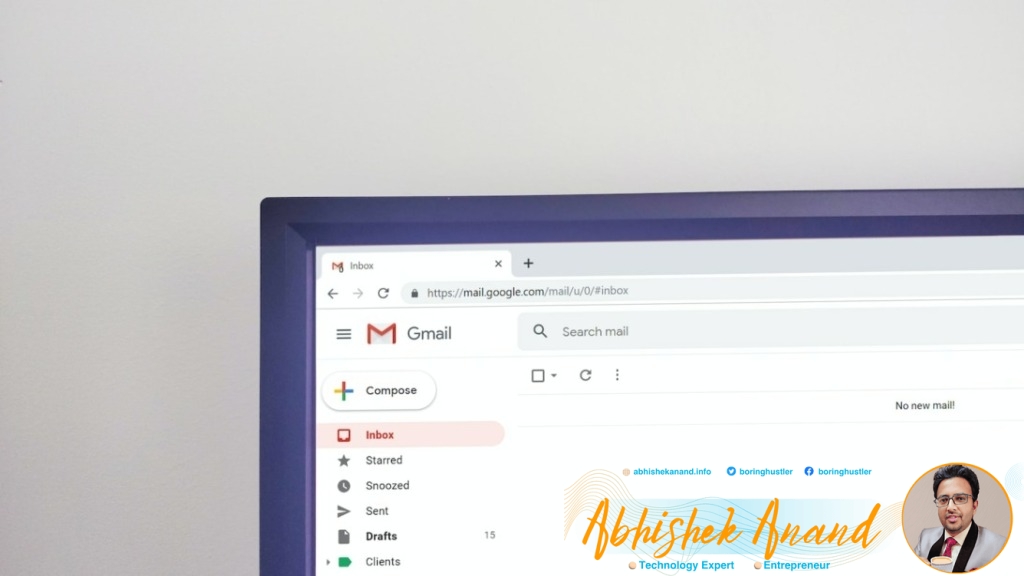Are you looking for the best way to market your online store? Take a look at e-commerce email marketing! This incredible tool has transformed how businesses communicate with their customers and is an incredibly effective way to increase sales, build relationships, and grow brand loyalty. In this comprehensive guide, we’ll cover everything you need to know to get started with email marketing for your e-commerce business, such as email marketing best practices, popular types of emails, and success measurement tips. So let’s get started!
What is the definition of Ecommerce Email Marketing?
Email marketing is fundamentally a form of digital communication between businesses and their customers. It gives marketers the ideal platform for connecting with customers in an effective and meaningful way. Companies can use this potential to build long-term relationships, increase sales, and positively shape public perception of their brand.
Putting Email Marketing Best Practices into Action
It is critical to understand best practices for e-commerce email marketing. Staying organized, writing clear and catchy subject lines, segmenting your audience, personalizing content, and optimizing for mobile devices are all part of it. Marketers should also be mindful of the frequency of their emails, monitor spam filters, and use optimization tactics such as A/B testing and click-through tracking, according to MailCharts.

Email Formats You Should Send
Now that we’ve covered the fundamentals of email marketing, let’s look at the different types of emails you should send. Newsletters, promotional emails, abandoned cart emails, event follow-up emails, customer feedback emails, order confirmations, shipping notifications, and product reviews are examples of such emails. Consider what type of communication you want to establish with your customers, what type of information they would find valuable, and which emails have the highest open and click-through rates when deciding which emails are right for your business.
Measuring and Optimizing Campaign Results
Once you’ve decided which emails to send, it’s time to start tracking results and optimizing your campaigns. Measure metrics such as open rates, click-through rates, engagement rates, and conversion rates to track the success of your campaigns. Then, use this data to tweak your campaigns, such as changing the content or experimenting with different subject lines.

Conclusion :
As can be seen, e-commerce email marketing is an important component of any digital marketing strategy. You can reap the amazing benefits of email marketing by taking the time to understand the principles of email marketing, choose the types of emails to send, and optimize your campaigns. This is only the first part of a two-part series; next time, we’ll go over even more tips and tricks for making the most of your email marketing campaigns!
- It is critical to choose the right software and tools for your specific goals when creating effective marketing campaigns. Mailchimp, Get Response, Constant Contact, Sendinblue, and MailerLite are all popular e-commerce email marketing tools. Each platform has different features and integrations, so take the time to compare your options and choose the best tool for you.
- Make certain that your emails are tailored to the needs of your customer base. Email personalization is essential for successful e-commerce email marketing, and it can be accomplished through customer segmentation, the use of the customer’s name, and the inclusion of relevant content. By taking the time to personalize your emails, you will build stronger bonds with your customers and increase the likelihood that they will engage with your content.
- Any email marketing campaign must include a clear call-to-action (CTA). Your CTA should be visually appealing, relevant to your target audience, and easy for customers to understand. Customers will not take action if they do not know what action you want them to take.
- Make sure your emails are optimized for both desktop and mobile devices. Because more and more customers are accessing emails from their phones, it’s critical that all of your emails look great on all devices. This includes making sure that all links and buttons are visible and that your emails are easy to read on mobile devices.
- Make use of email automation. Setting up automated email campaigns allows you to save time and energy while still reaching your intended audience. Automation tools enable you to schedule emails and personalize them for each recipient.
- Include visuals in your emails. Including images and videos in your emails can help break up text-heavy content and draw attention to your call-to-action buttons. When choosing visuals for your emails, select high-quality, relevant images that will appeal to your audience.
- Keep track of your progress. Keep track of which emails are opened, which links are clicked, and how many people unsubscribe from your list. These metrics will indicate whether or not your email campaigns are effective.
Keep your emails brief. Nobody wants to read an email that reads like a wall of text. Use subheadings and relevant visuals to break up your content, and keep your emails brief.
- Experiment with various strategies. To determine which tactics work best in terms of engagement, try including coupons, offering free shipping, and running giveaways. Track the results of new strategies as you test them to see which ones perform the best.
Finally, use analytics tools to track the effectiveness of your campaigns. Google Analytics, Hotjar, and Kissmetrics are three popular e-commerce email marketing analytics tools. These tools will give you useful information like open rates, bounce rates, click-through rates, and more.

E-commerce email marketing is one of the most effective and efficient methods of marketing your online store. You can use email marketing to build strong relationships with your customers and increase sales with the right strategies and a little creativity. Whether you’re just getting started or looking to expand your existing email campaigns, this guide will teach you everything you need to know to get started with e-commerce email marketing.
FAQ
What exactly is e-commerce email marketing?
A type of digital communication between businesses and their customers is e-commerce email marketing. It gives marketers the ideal platform for connecting with customers in an effective and meaningful way.
Q: What are some best practices for email marketing?
A: It’s critical to stay organized when creating emails, as well as to craft clear and catchy subject lines, segment your audience, personalize content, and optimize for mobile devices. Additionally, keep an eye on your email frequency, monitor spam filters, and use optimization techniques like A/B testing and click-through tracking.
Q: What kinds of emails should I be sending?
Newsletters, promotional emails, abandoned cart emails, event follow-up emails, customer feedback emails, order confirmations, shipping notifications, and product reviews are all popular email types. Consider what type of communication you want to establish with your customers, what type of information they would find valuable, and which emails have the highest open and click-through rates when deciding which emails are right for your business.
Q: How do I assess the effectiveness of my campaigns?
A: Measure metrics such as open rates, click-through rates, engagement rates, and conversion rates to track the success of your campaigns. Then, use this data to tweak your campaigns, such as changing the content or experimenting with different subject lines.
Q: What are some popular email marketing tools for e-commerce?
Mailchimp, GetResponse, Constant Contact, Sendinblue, and MailerLite are examples of popular e-commerce email marketing tools. Each platform has different features and integrations, so take the time to compare your options and choose the best tool for you.
TL/DR: Email marketing is an effective tool for e-commerce businesses because it allows marketers to build relationships, shape brand perception, and increase sales. To get started with successful e-commerce email marketing, you must first understand best practices, select the appropriate emails to send, and measure and optimize campaigns. You’ll be able to reap the incredible benefits of email marketing with these tips and tricks.

